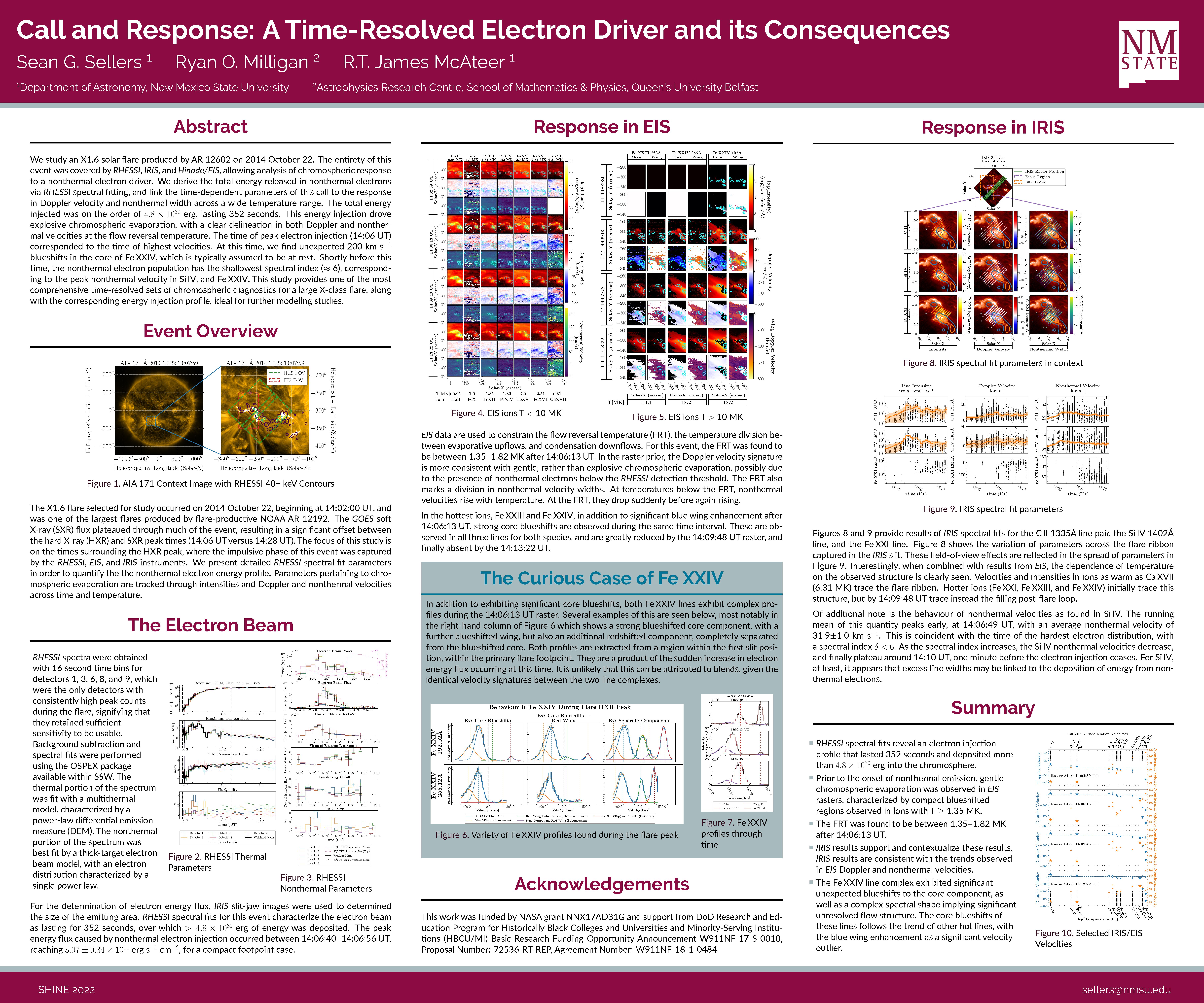Authors: Sean G. Sellers (Department of Astronomy, New Mexico State University), Ryan O. Milligan (Astrophysics Research Centre, School of Mathematics and Physics, Queen's University Belfast), R.T. James McAteer (Department of Astronomy, New Mexico State University)
We study an X1.6 solar flare produced by AR 12602 on 2014 October 22. The entirety of this event was covered by RHESSI, IRIS, and Hinode/EIS, allowing analysis of chromospheric response to a nonthermal electron driver. We derive the total energy released in nonthermal electrons via RHESSI spectral fitting, and link the time-dependent parameters of this call to the response in Doppler velocity and nonthermal width across a wide temperature range. The total energy injected was on the order of 4.8×10^30 erg, lasting 352 seconds. This energy injection drove explosive chromospheric evaporation, with a clear delineation in both Doppler and nonthermal velocities at the flow reversal temperature. The time of peak electron injection (14:06 UT) corresponded to the time of highest velocities. At this time, we find unexpected 200 km/s blueshifts in the core of Fe XXIV, which is typically assumed to be at rest. Shortly before this time, the nonthermal electron population has the shallowest spectral index (≈ 6), corresponding to the peak nonthermal velocity in Si IV, and Fe XXIV. This study provides one of the most comprehensive time-resolved sets of chromospheric diagnostics for a large X-class flare, along with the corresponding energy injection profile, ideal for further modeling studies.


